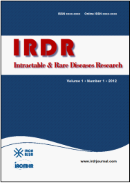Drug Discov Ther. 2009;3(3):123-135.
Formulation and optimization of sustained release terbutaline sulfate microspheres using response surface methodology.
Khattab I, Bandarkar F, Lila A
The present study reports the optimization of sustained release microspheres of terbutaline sulfate (TS) and Eudragit RSPM using response surface methodology. The microspheres were prepared by the emulsion solvent evaporation process utilizing Eudragit RSPM as release retarding agent. A 32 full factorial design was utilized by taking the drug: Eudragit RSPM ratio (X1), the percent of Span 80 (X2) and the speed of rotation (X3) as the independent variables; particle size (Y1) and percent drug released (Y2) were the dependent variables. The resultant microspheres were subjected to various physicochemical analysis, viz., drug content, micrometrics, photo-microscopy and in vitro drug release. The percent of drug release at 8 h of dissolution decreased from 90.7% to 61.3% with increase in polymer concentration from 4 to 8%. It was observed that an increase in surfactant concentration from 1 to 2% and speed of rotation from 500 to 900 rpm decreased the size of microspheres (350-330 μm). The results of the present study indicate that optimized sustained release microspheres of terbutaline sulfate could be successfully prepared by the emulsion solvent evaporation method by emulsifying the drug and polymer in the ratio of 1:8, at a speed of 500 rpm, utilizing 1.5% of span 80 as emulsifying agent.







